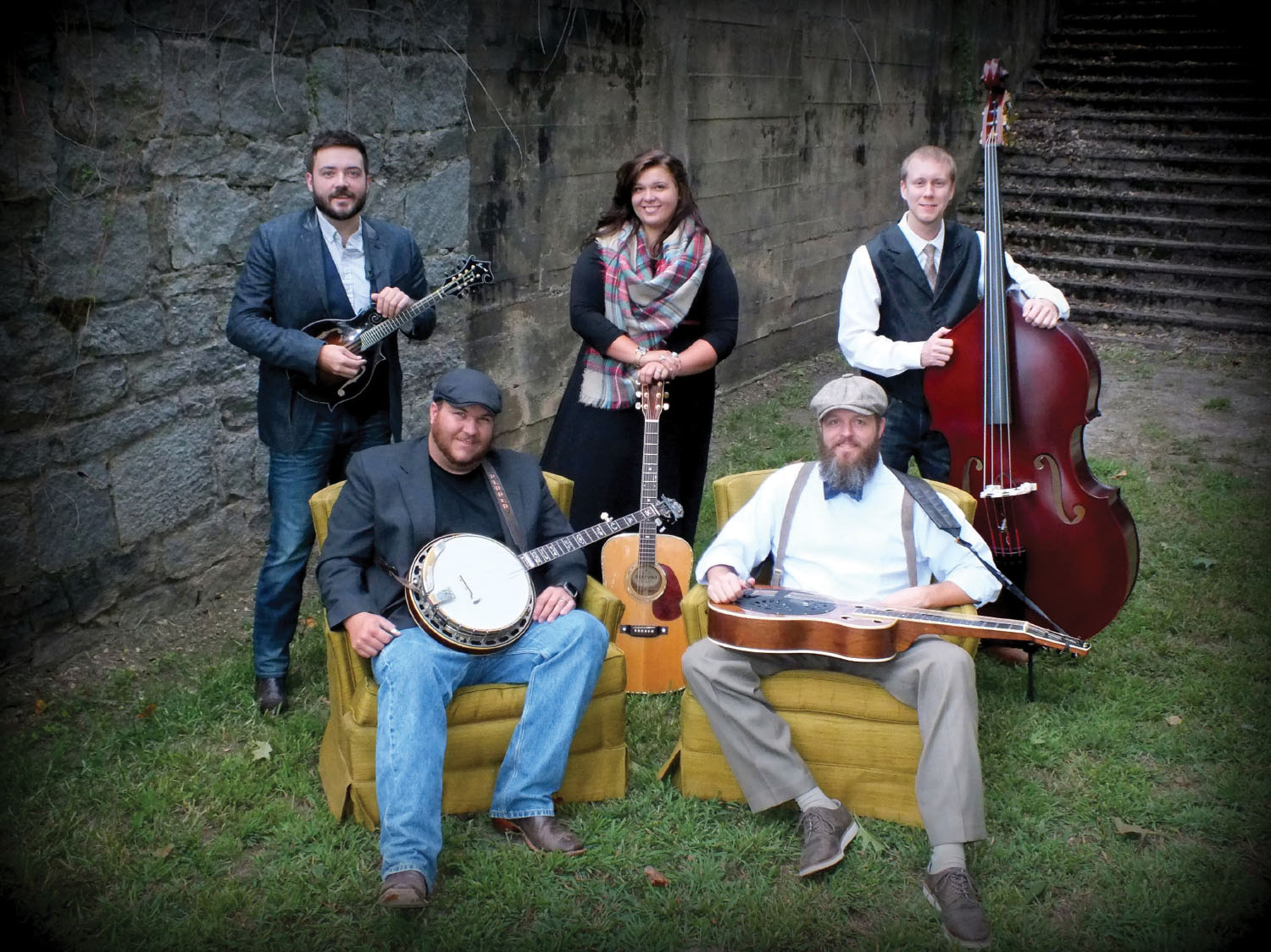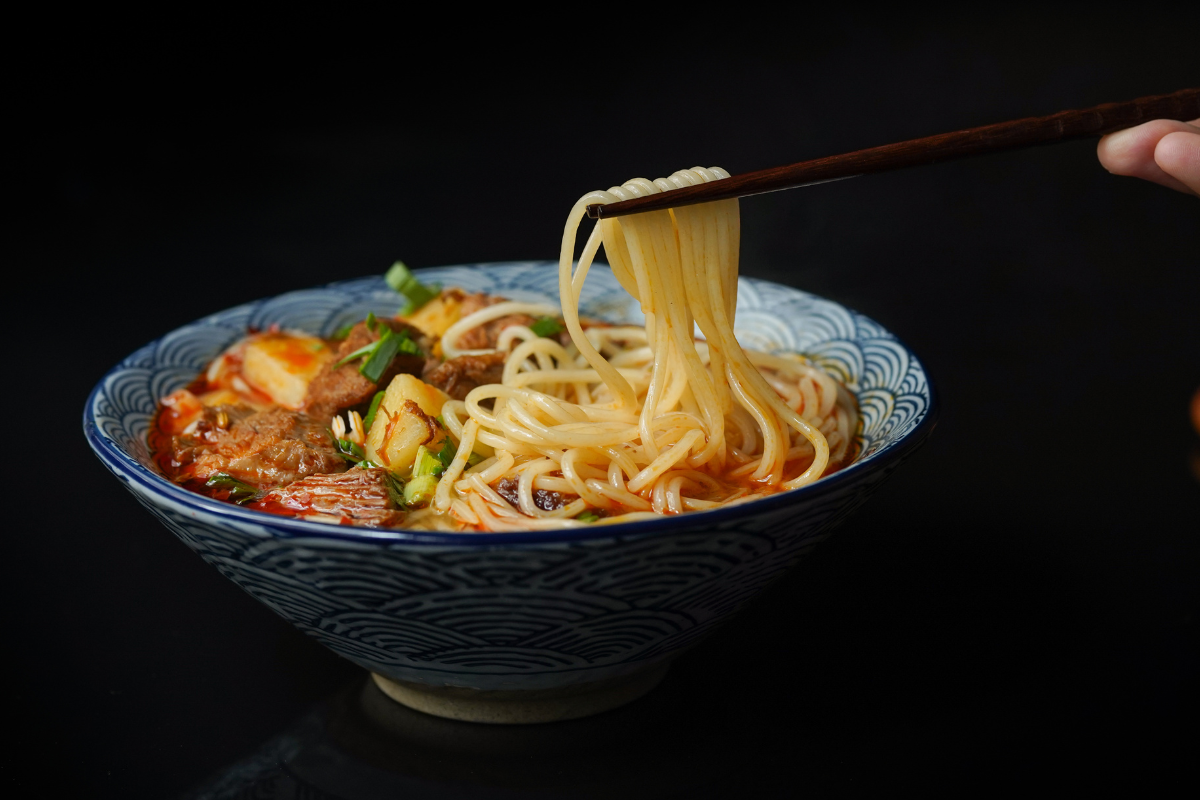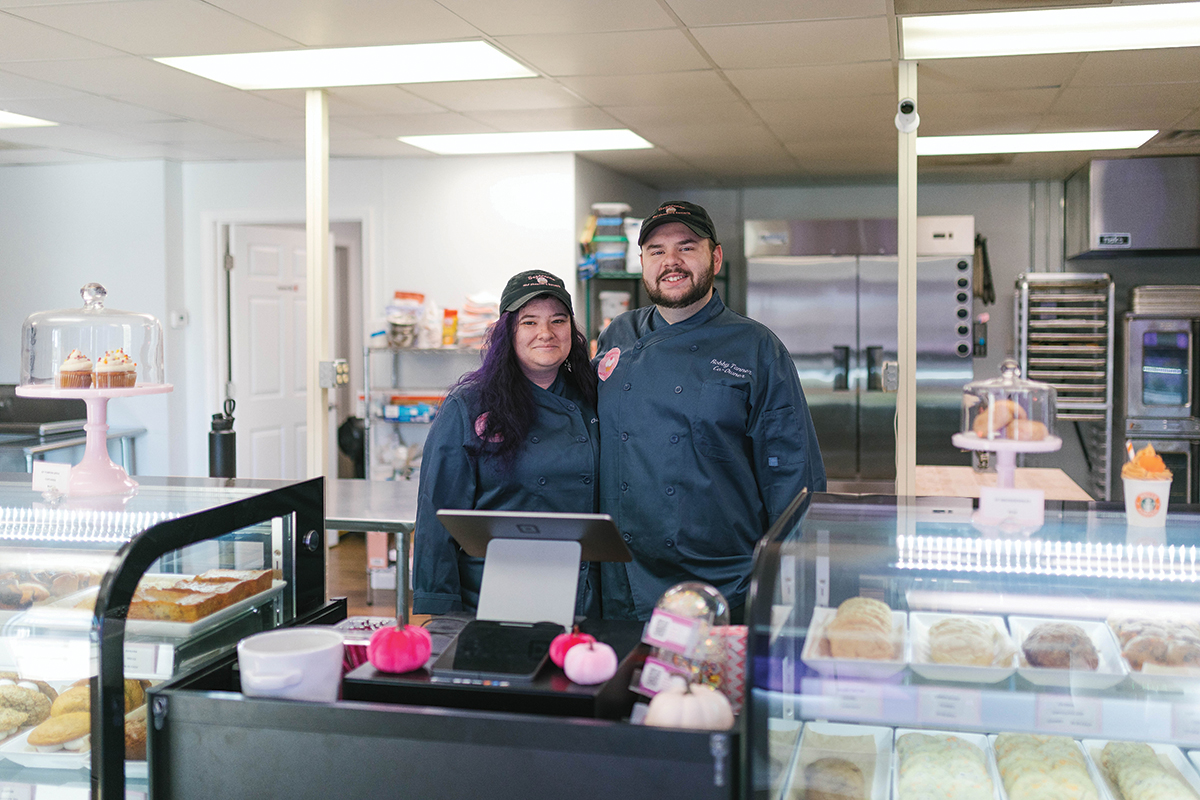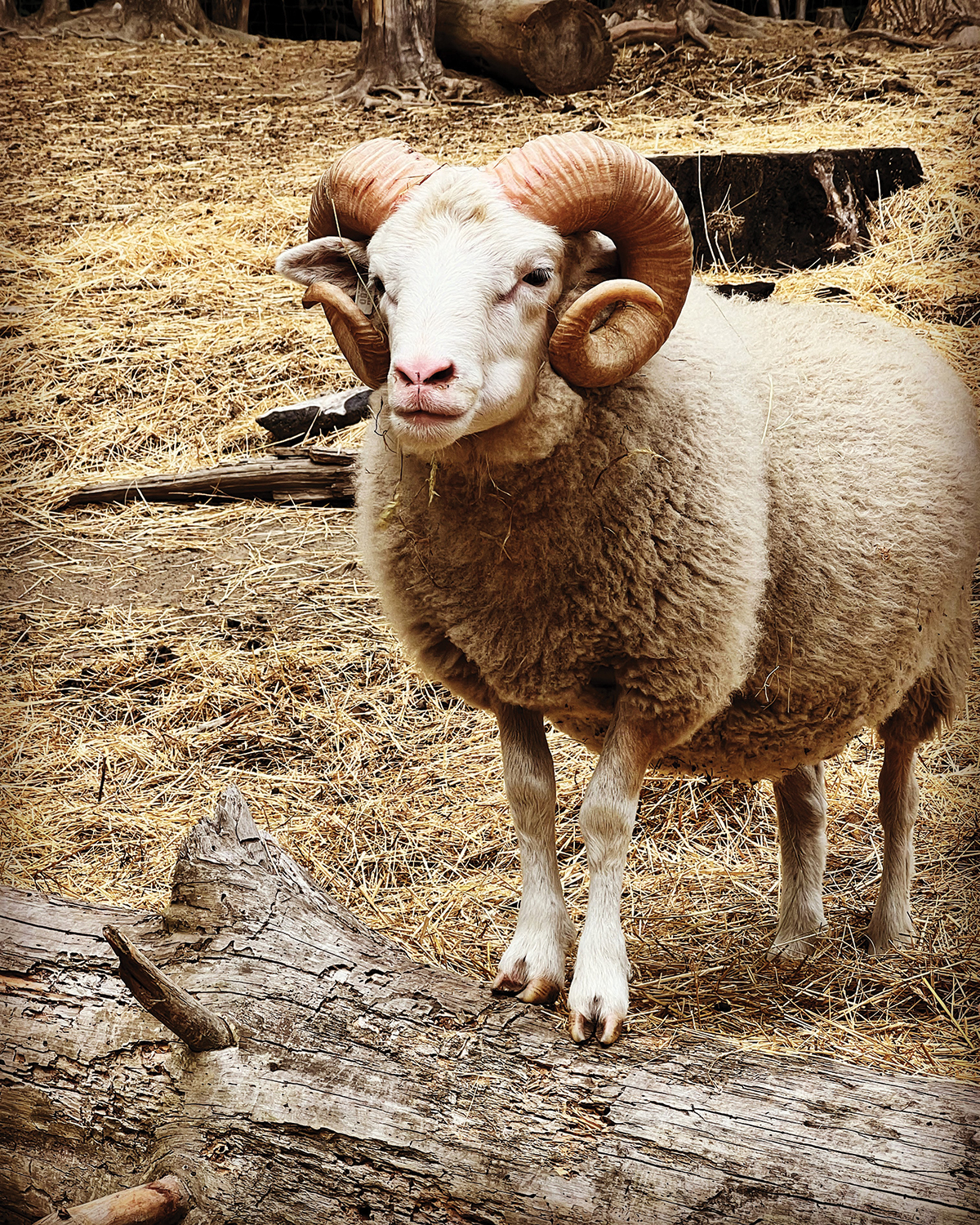
Backline sews up a traditional-music hybrid based on mill-town roots. Photo by Kandice Tucker
Five-piece bluegrass band Backline came together in 2016, playing a style of mountain music that bridges the gap between traditional and modern, between the flatland and the foothills. The group’s rich vocal harmonies are a highlight; all five members sing. Based in Spartanburg, SC, Backline has released two albums: 2016’s Carolina and a brand-new collection, A Thousand Wishes. Their name is a reference to the area’s history of “Mill Hill” towns, “backline” being the last in a row of worker housing. Most members are natives of the Upstate region.
What’s your favorite thing about performing in front of an audience?
Travis Tucker (Dobro): We play 90% or so original material, and to have the crowd love the music that we’ve created and to cheer us on — that connection with the crowd — is probably our favorite thing.
How does your experience with other styles of music inform and color the music you make with Backline?
I started out playing piano when I was 9 years old. Just like any other kid who took piano lessons, you learn classical pieces to perform them at recitals. Learning piano first has played a huge role in helping me understand theory, which in turn, has molded me into the Dobro player that I am today.
What are some of the modern elements in Backline’s music?
We think outside the box. Not every song has to be a banjo kick and sound just like something straight off a Flatt & Scruggs album. Now, don’t get me wrong: we love that stuff. But we have our own sound; that’s what we enjoy playing and what people enjoy hearing. We mainly play original songs, but Bryan Adams’ ballad “Straight From the Heart” is one song that we cover.
You come from a solid bluegrass foundation rooted in musical tradition. How do you write songs that are true to that tradition, yet expressive of your own thoughts and emotions?
Katelyn Ingardia (guitar): I try not to force material, because I want to write the best piece of music I can. I can be inspired by a melody or a thought I have, or a line I hear. To find that inspiration, I have to watch, listen, and just wait.
Banjo player Al Osteen was an important part of the Upstate bluegrass community. How does his influence manifest itself in Backline’s music?
Zachary Carter (banjo): As a band, we’ve definitely benefited from several of Al’s key lessons, going way beyond just how to play “Cripple Creek.” He had a unique way of presenting dynamics, and how a band can work together to create a unified sound.
You played electric bass before moving to the upright bass fiddle. Is the acoustic a more expressive instrument?
Jason Belue (bass): There are characteristics I love about both of them. The distinctive sound of an upright bass better fits our style; that’s the main reason I made the transition. The upright also wins the race in versatility. Having a curved fingerboard, no frets, and a big wooden body opens up the options for bowing and a little percussion.
What’s the role of the mandolin in Backline’s music?
Louis Hughes (mandolin): It provides the percussion off-beat to the downbeat of the bass. I accent Katelyn with the fills around the singing, and I have a blast playing the solos. And transitioning to more progressive sounds with the mandolin is extremely fun.
Backline (www.backlinesc.com) plays the North Carolina Mountain State Fair at the WNC Agricultural Center (1301 Fanning Bridge Road, Fletcher) on Tuesday, Sept. 11, at 6pm. For more information, see the “Mountain Music” link on the fair calendar, wncagcenter.org.



